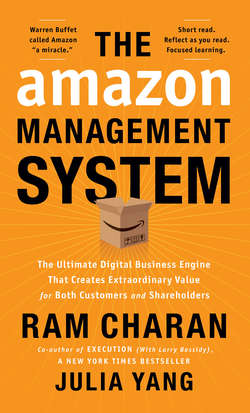Читать книгу The Amazon Management System - Ram Charan - Страница 10
Why this book? Why now?
ОглавлениеOur 21st century prevailing management systems are still largely inherited from the oldest forms of human organization, such as the military and the church. They were designed for the purpose of command and control in an age when there was no Internet, no smartphone, and none of the various forms of digital technology such as big data, algorithms and AI, and when personal supervision was the only way to keep an eye on employees.
The military and the church were organized by function and had many hierarchical layers. So were the business organizations that mimicked their management system.
Then there came an important innovation: Pierre DuPont of the DuPont Corporation and Alfred Sloan of General Motors created divisional structure in the 1920s. Then the matrix structure evolved in the 1960s to accommodate the global market and global supply chain. However, as businesses grew bigger, the number of layers went up, bureaucracy increased, and decision making slowed down.
In the 1980s Jack Welch of GE created the concept of the operating system. While the intensity of execution increased, the number of layers remained large, bureaucracy remained intense, decision-making remained slow, and the chain between manufacturers and end-users remained long.
Moreover, such a management system was not focused on customers or on innovating for customers. Instead, organizational leaders fixated on competition with a mindset deeply entrenched in achieving incremental growth slightly better than GDP, gaining market share against a few key competitors, and benchmarking best practices here and there.
This old management approach has become obsolete in the digital age. Amazon is one of the biggest reasons why.
